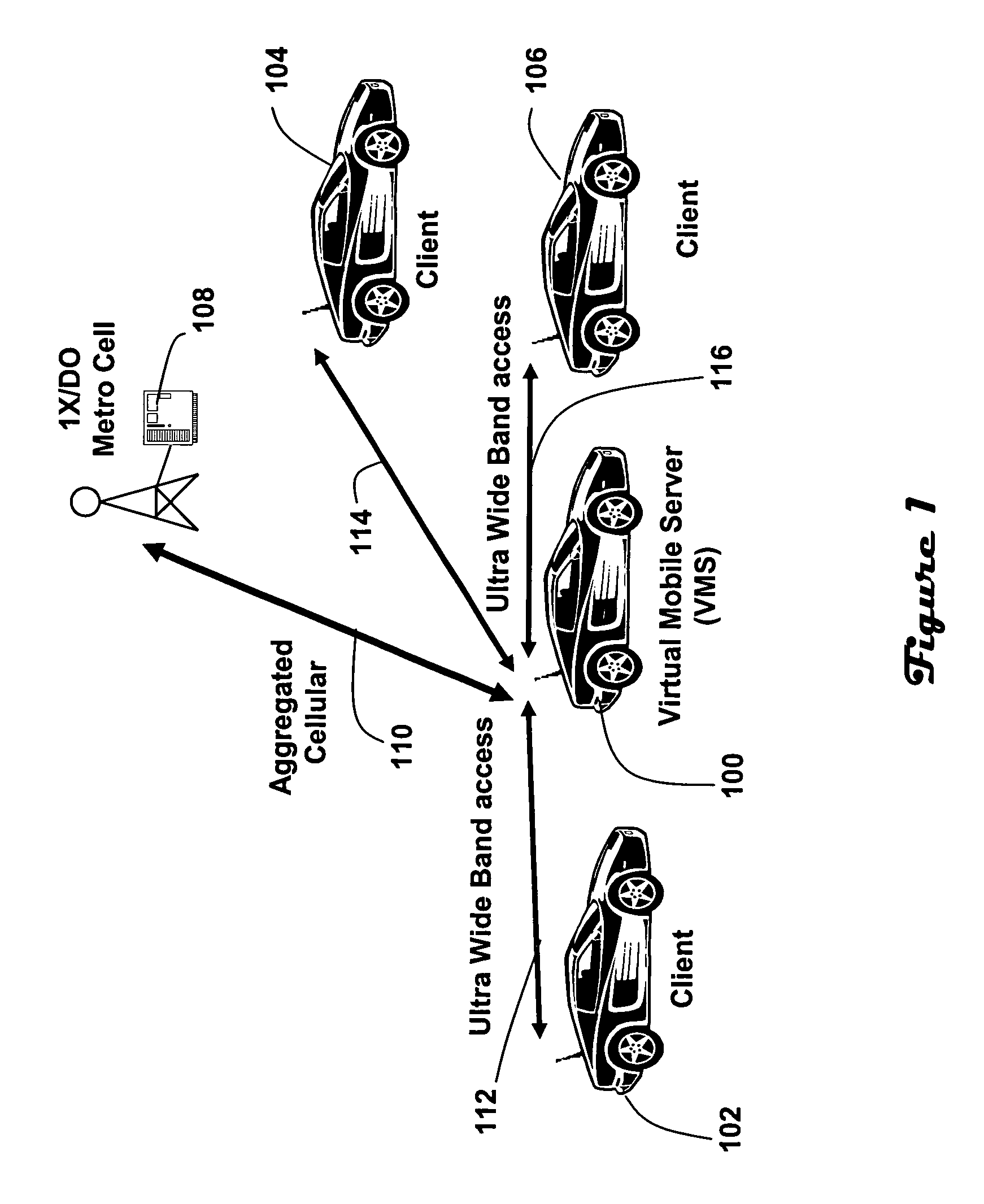Mobile ad hoc network
a mobile ad hoc network and network technology, applied in the field of network communications, can solve the problems of relatively time-consuming protocol associated with a cell station, and achieve the effect of reducing overhead, increasing the bandwidth available to a client, and reducing the amount of bandwidth required
- Summary
- Abstract
- Description
- Claims
- Application Information
AI Technical Summary
Benefits of technology
Problems solved by technology
Method used
Image
Examples
Embodiment Construction
[0011]Referring to FIG. 1, a Virtual Mobile Server (“VMS”) (100) facilitates wireless access between subscriber devices (“clients”) (102, 104, 106) and a cell station (108). In particular, the VMS (100) is operable to aggregate traffic from the clients onto a single session on an aggregated cellular access link (110) between the VMS and the cell station. The VMS (100) is further operable to relay traffic from the cell station to the clients. In the illustrated embodiment the clients and VMS are implemented in automobiles. While this is not the only possible embodiment, an automobile offers the potential advantage of availability of a relatively constant high power supply.
[0012]The communications link (110) between the VMS and cell station is non-interfering relative to the respective links (112, 114, 116) between the VMS and the clients. In the illustrated embodiment the communications link (110) between the VMS and the cell station utilizes in a current embodiment standard cellular...
PUM
 Login to View More
Login to View More Abstract
Description
Claims
Application Information
 Login to View More
Login to View More - R&D
- Intellectual Property
- Life Sciences
- Materials
- Tech Scout
- Unparalleled Data Quality
- Higher Quality Content
- 60% Fewer Hallucinations
Browse by: Latest US Patents, China's latest patents, Technical Efficacy Thesaurus, Application Domain, Technology Topic, Popular Technical Reports.
© 2025 PatSnap. All rights reserved.Legal|Privacy policy|Modern Slavery Act Transparency Statement|Sitemap|About US| Contact US: help@patsnap.com



